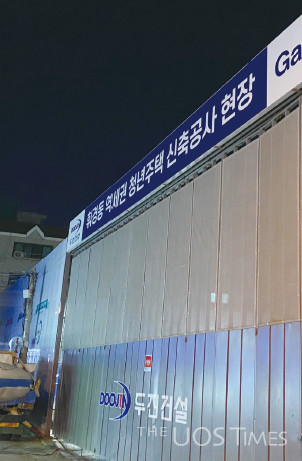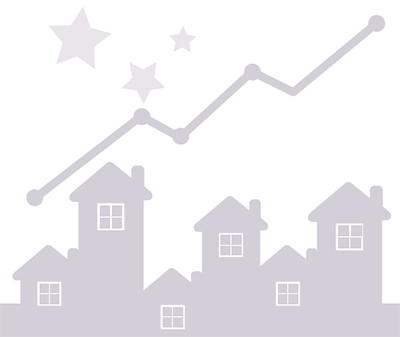The “Revisions to the Housing Lease Protection Act” was passed by the National Assembly of Korea on July 29. This revision aims to stabilize housing prices and protect tenants who were more vulnerable earlier. The revised bill has become a hot topic among political circles and has snowballed into a social conflict. Initially, the government attempted to distinguish between citizens who simply wanted to live in the house they bought and those who wanted to increase their wealth through the house.
Members of the ruling party wanted to ensure that buyers can easily find a house so there is no housing shortage. The housing shortage is a grievous issue and the government is going as far as to consider methods for renovating and supplying hotel rooms. However, the classification of those two groups of buyers is vague. Therefore, the government is attempting to find a solution by constantly changing measures. To understand why the revision of this Act is controversial, understanding the meaning of real-estate in Korea is crucial. This harsh situation in Korea has also inflicted damage to the youth.
Why is real estate so special in Korea
The real estate boom in the Gangnam area during the 1960s led to soaring housing prices. This phenomenon led to those in Gangnam becoming rich, while others began to engage in real estate speculation by imitating those in Gangnam. Those earning money through real estate speculation have remained a constant presence, and have been cited as the primary cause of the rise in housing prices because the use of houses for purely residential purposes has almost disappeared. During that period, corporations actively engaged in real estate speculation. However, as the construction of apartments increased, around the mid-1970s, individuals began to join in the speculation. Although these individuals accumulated wealth at a nearly corporate-level, it is out of the control of the government despite the introduction of countless regulations. Moreover, because real estate is a dependable, stable asset for any economic variable, more people are forced to partake in such acts.
Therefore, real estate ownership has become the most crucial measure of wealth in Korea. Currently, real estate accounts for 76.8 percent of the total assets per household. This plays a key role in dividing social classes, and it relates to an old conventional wisdom in Korean society to distinguish the scale of property according to where one lives. Based on the type of housing, the average total assets of apartment residents are two to three times higher, compared with single-family, rowhouses, and multi-family homes. In addition, as the upper-class population living in apartments increases, social classes are often divided based on apartment brands or whether the apartments are owned or rented.

There have been countless conflicts over real estate in Korea. Because it is one of the most important factors in their lives. In particular, the conflicts between tenants and owners have been severe, due to the strong perception that the owners were people who made money through the houses. The occasional instances of owners overusing their power have further encouraged this perception. The act was revised to better protect tenants’ rights within the current social atmosphere. The act focuses on three issues. Although the tenant is allowed to receive an extension of the contract, the owner’s rights were also protected by setting a time frame within which the contract can be extended. Moreover, the owner is not allowed to increase the rent by a specific percentage. Therefore, tenants cannot be evicted by a sudden increase in rent. As a safety mechanism, the owners are required to report to the state or local governments to ensure that the state can continue to monitor them.
This type of real estate culture has created various phenomena that can only be found in Korea. Preference for apartment housing and the pre-sale system of apartments are the most notable examples. These systems have played a key role in maintaining the current status quo.
As mentioned earlier, real estate is regarded as the most efficient method of investment and the primary factor in determining one’s economic class. Due to this unique real-estate culture, the gap between the rich and the poor is further widening. To make matters worse, the COVID-19 crisis has caused widespread financial issues. Current employment indicators are worse than the 2008 global financial crisis and the youth have been left with few opportunities. Most companies are in a situation where they are cutting back on employment, and overall industries, such as tourism, have been directly affected. The pandemic and subsequent lockdown measures have prevented people from engaging in real economic activities. There was a widespread perception among young people that they would not find employment even if they tried, and finding a house is far more difficult. Therefore, people abandon their dreams of buying their own house and seek realistic alternatives, such as monthly rent. However, it is difficult to find a house in Seoul with affordable rent.
As a result, people are paying more attention to “Youth Housing”, which targets young people. This project helps young people to depend on the government for some economic burdens. Based on this support, people seek to achieve economic stability and buy their homes through various methods, including savings and employment. In particular, college students are more interested in this project because it is difficult to accommodate all students in campus dormitories. Although most foreign universities are capable of accommodating the entire student population, Seoul relies on the surrounding residential areas. Not only is it difficult to find a dormitory in Seoul, but it is also difficult to build additional dormitories due to opposition from residents. The monthly rent business is the primary means of livelihood for the surrounding residents. This complicated situation is making it increasingly difficult for college students. Therefore, it is difficult for college students to find other options besides “Youth Housing”.

Youth Housing
The government is suggesting a purchase lease method wherein Korea Land & Housing Corporation (LH), under the Ministry of Land, Infrastructure and Transport, buys and rents vacant houses. In this case, each local city corporation will sign a lease contract with the owner and provide lower rent to tenants. It is also proposed to supply rental houses by remodeling shops, offices, and factories. This type of policy is called “Youth Housing”. It is part of “LH Housing Welfare Business”, which ensures the consistent availability of affordable housing for Korean people through the creation of various housing-related services. Two new buildings are being built around Hoe-gi Station as part of this project. The neighborhood is adjacent to University of Seoul, Hankuk University of Foreign Studies, and Kyunghee University. Naturally, youth housing projects that utilize existing houses are also active. Many students are expected to move into the building. Recruitment notices may appear on the websites of LH and Seoul Housing & Communities Corporation (SH). If you are interested in it, regularly check the notices.
There are certainly few problems. Although the supply of youth housing for young people is increasing, some have pointed out that the timing and volume of the housing supply are not appropriate. Moreover, the recruitment process is complicated for college students to understand. Therefore, Student A, who lives in a youth rental house, gave some advice to the reporter: “Be careful because there may be additional charges, such as bedding and electronics rental fees, for each house.” Even after moving in, the monthly rent may be too high. Of course, students must inquire about the rent and details, and find out if they are being levied any additional charges. Moreover, A said, “However, those who are well-equipped with the necessary documents will be more likely to apply for the frequently-announced public notices and acquire those opportunities.” To access the notice on the website, individuals require the necessary documents, which are usually required when applying elsewhere. Despite this difficulty, young people have expressed that living in rental housing helps them save monthly rent and living expenses through various living equipment provided there.
The monthly rent of a studio apartment in Seoul is an average of 490,000 KRW, which is too high for a college student to afford by themselves. However, students can live at a lower price if they use this policy. Through this policy, the system can provide help to college students. First, students would be less worried because the government verifies the stability of the building in advance. Second, there would be no fear of owners increasing prices at will or kicking tenants out. This policy provides stability for the youth, the most unstable class in society, to rely on. However, residents around them are worried that the prices of their own houses will reduce because cheap houses are coming into their town. Some rental houses are not being built due to opposition from residents. College students who wish to use them are actively promoting their cause to persuade the people around them. These cases show how urgent college students are, and the government is working on countermeasures. Administrative procedures must be conducted in various aspects, including public hearings to persuade residents and provide an environment for helping students.
Despite countless efforts, housing prices are steadily increasing. Housing vulnerable groups, including young people and the working class, is a difficult task. Instead of inconsistency with the ever-changing policies, it is time for a long-term perspective to work. According to a survey of economists conducted by the Korea Economic Association in August 2020, 54 percent of respondents said that housing stability should be prioritized among the young people and the working class, instead of the direction of the policy that they are currently working on. Therefore, experts believe that a well-focused policy and concrete countermeasures for them must be prepared first. These changes would serve as the foundation for a society wherein ordinary people can live comfortably in their own homes.

Preference for apartment housing
In 2015, the National Statistical Office stated that with 48.1 percent votes, apartments topped the list of housing types that Koreans want to live in. Due to the rapid urbanization, it is difficult to find rural houses or terraces in Korea that can be seen in foreign countries. Apartments that can accommodate many households in a narrow area can provide more space and an increasingly efficient residential environment for numerous people. In the aforementioned social environment, people yearn for a stable form of residence. Gradually, apartments have seemingly transformed into a symbol of a financially-stable life. As of 2018, the ratio of apartments to the number of houses was 56.5 percent, thereby indicating that they are also mainstream. They are densely populated, and thus have more convenient facilities and require less money for management.
Pre-sale system of apartments
The “pre-sale system of apartments” is a system wherein apartments are sold to tenants in advance before the housing construction is completed. To cover construction costs, construction companies require residents to pay approximately 80 percent of the pre-construction housing prices. Because housing demand is high, the government is attempting to maintain a stable supply by putting up houses for sale before they are constructed. In Korea, most apartment sales are operated as pre-sale systems. Since installment payments are possible, individuals can buy slightly more expensive houses than they can afford. However, because the building was purchased before completion, tenants may be exposed to economic losses if the builder becomes bankrupt before completing construction. In addition, tenants may also suffer due to poor construction.

Kim Jae-kyeom
kjk03161@uos.ac.kr

